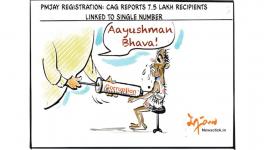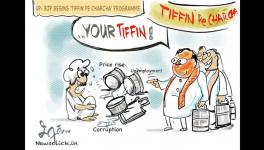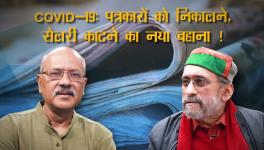Keeping Laxman’s Common Man in the Picture
Well before I learnt to read the news, I learnt to look out for the common man first thing every morning. This man who greeted me on the front page each day: he was pear-shaped. He had a bulbous nose incapable of snobbery. His mouth was barely visible under the fluffy, unkempt mustache. His round-moon glasses and the two untameable wisps of hair gave him a permanently bemused look.
It was impossible not to take him seriously though. He taught me a thing or two about the common man (and woman). So self-effacing was the common man that he could be everywhere. Invisible to many, he heard and saw all things, in the streets and in the halls of power. There was no escaping him. He was a fact of our existence, and he would always be. And he would always be taking it all in, the drama and the farce, the frauds and foibles, the tragicomic antics – of rulers and leaders, bureaucrats and officials, squatters and beggars, even people like himself. These people were ignored, powerless, unarmed, often far too gentle; but they were never voiceless.
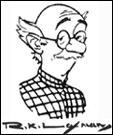
There was another reason I felt the common man belonged to me. (Or perhaps I belonged to him.) When I was about twelve, Laxman drew a common man for me. Looking neither elated nor scornful, looking exactly like himself, this common man held a book. The cover of the book said Tales by Githa. I treasured it for months, till my sister, after some quarrel or the other, erased Githa and scribbled in her name. So easy it is to lose the common man if you are not paying close attention.
We had several other drawings my father brought home from The Times of India where he worked for many years. These were quickies, rough sketches made during the lunch break my father shared with Laxman. My own favourite was the one of Shastri and the Indian flag. My father was playing with the colour pencils on his table as he and Laxman gossiped after lunch. My father, no artist, drew and coloured in the national flag. Laxman leaned over, picked up a pencil. He gave the flag height and stature by resting it on a pole and a stand. Then he quickly sketched in a harassed Lal Bahadur Shastri, clutching the pole as he tried to make his way up to the flag.
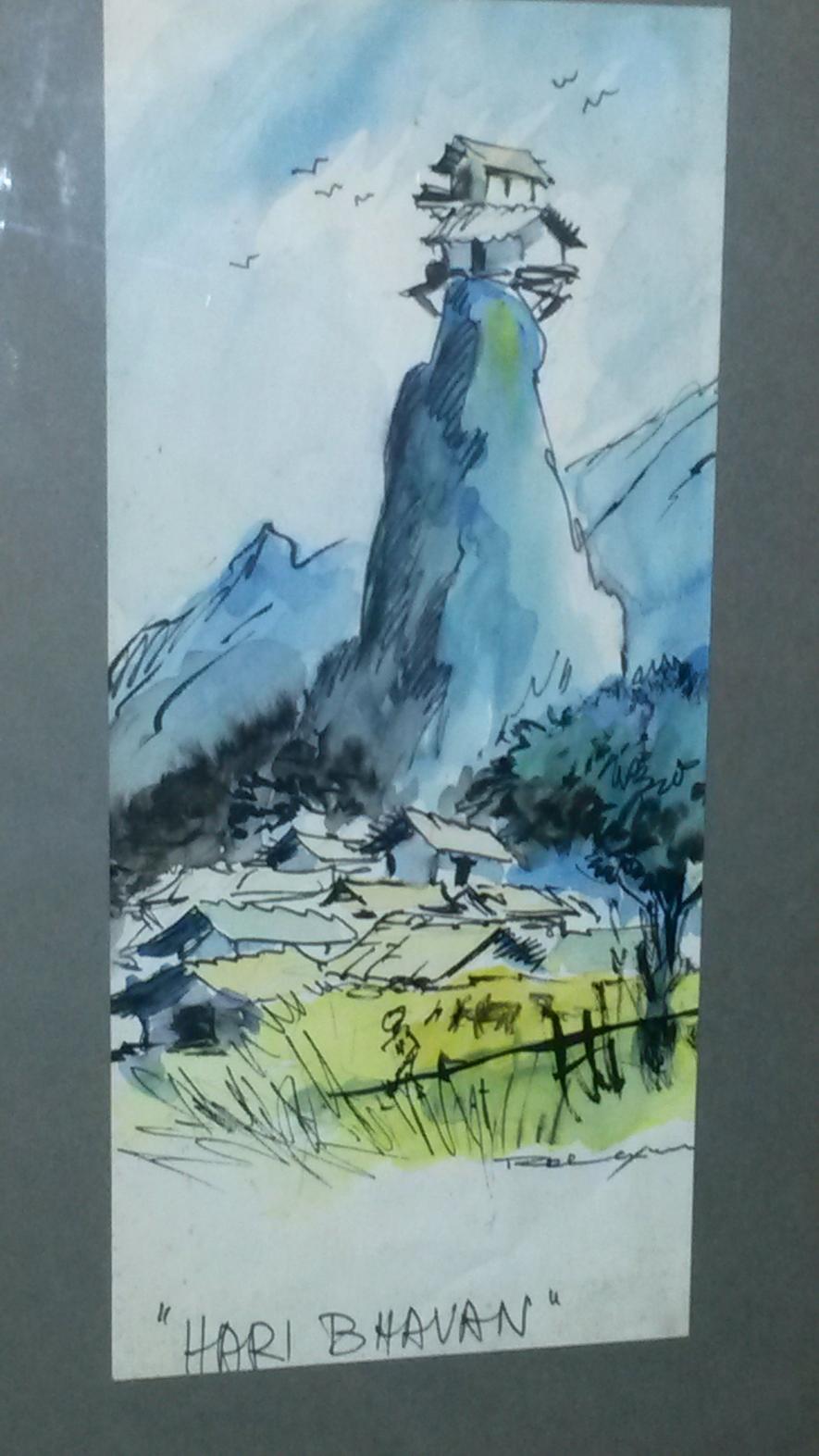
There was another picture, this one in bold strokes of colour. It had a title too – Hari Bhavan. At the top of a pointy hill tottered a little house. Laxman, we children gathered, liked to tease, and he was teasing my father about his ambition at that time, to buy a flat as close to Bombay as possible. We sensed something sharp-edged about the teasing; we felt a bit disloyal; but we couldn’t help being delighted with my father’s house as Laxman saw it.
We met Laxman and his outgoing, articulate wife several times as we grew up. But I remember Laxman best from my father’s accounts of those lunch breaks. Laxman, we learnt, liked the sharp taste of vettha kuzhambu, all tamarind and chili. He could be acerbic about idiots and their idiocies. He liked drawing crows over and over again.
One story my father told us impressed me deeply. Now and then, he said, Laxman would not show up for lunch. My father would know then that it was a slow day for the creator of You said it! Laxman would have locked himself in his Times cabin. Till the cartoon for the day was on paper, he would starve himself. Hunger would finally force his mind and hand and pencil to turn an uninspired day into a productive one.
My father may well have invented the story for my benefit, and benefit me it did. It told me something about art, cartooning, the creative life – and maybe the common man. You can’t get to any of these without knowing what hunger feels like, and some very hard work.
Disclaimer: The views expressed here are the author's personal views, and do not necessarily represent the views of Newsclick
Get the latest reports & analysis with people's perspective on Protests, movements & deep analytical videos, discussions of the current affairs in your Telegram app. Subscribe to NewsClick's Telegram channel & get Real-Time updates on stories, as they get published on our website.










